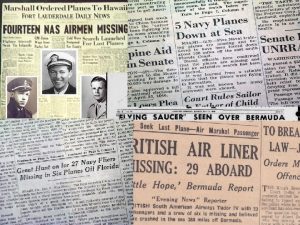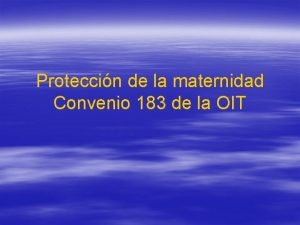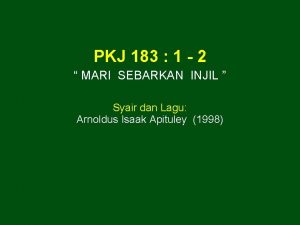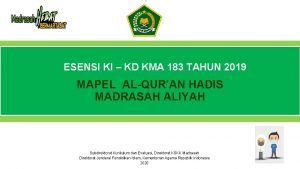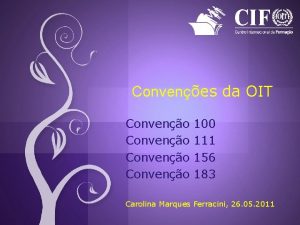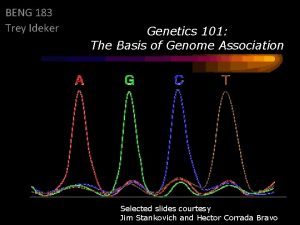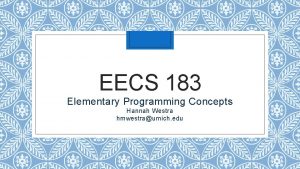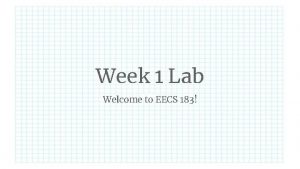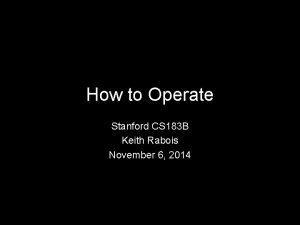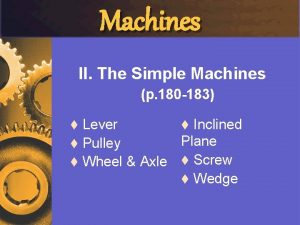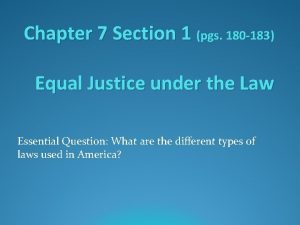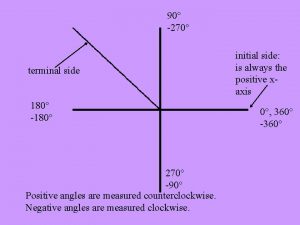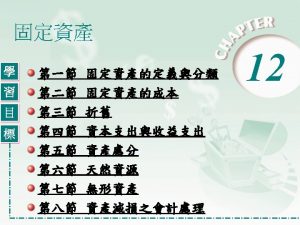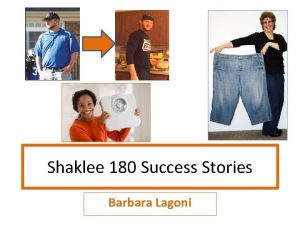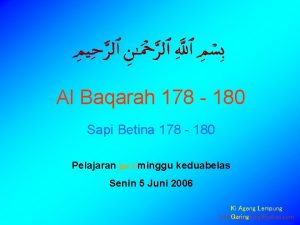Machines I Introduction to Machines p 180 183












- Slides: 12

Machines I. Introduction to Machines (p. 180 -183) t t t Machines Force Work Mechanical Advantage Efficiency Power

A. Machines u Machine l device that makes work easier l changes the size and/or direction of the exerted force

B. Force u Effort Force (Fe) l force applied to the machine l “what you do” u Resistance Force (Fr) l force applied by the machine l “what the machine does”

C. Work u Work Input (Win) l work done on a machine Win = Fe × de u Work Output (Wout) l work done by a machine Wout = Fr × dr

C. Work u Conservation of Energy l can never get more work out than you put in l trade-off between force and distance Win = Wout F e × d e = F r × dr

C. Work u In an ideal machine. . . Win = Wout u But in the real world… l some energy is lost as friction Win > Wout

D. Mechanical Advantage u Mechanical Advantage (MA) l number of times a machine increases the effort force l MA > 1 : force is increased < 1 : distance is increased = 1 : only direction is changed

D. Mechanical Advantage u A worker applies an effort force of 20 N to open a window with a resistance force of 500 N. What is the crowbar’s MA? GIVEN: WORK: Fe = 20 N Fr = 500 N MA = ? MA = Fr ÷ Fe MA = (500 N) ÷ (20 N) MA = 25 Fr MA Fe

E. Efficiency u Efficiency l measure of how completely work input is converted to work output l always friction less than 100% due to

E. Efficiency u A worker exerts a force of 500 N to push a 1500 N sofa 4. 0 m along a ramp that is 1. 0 m high. What is the ramp’s efficiency? GIVEN: WORK: Fe = 500 N de = 4. 0 m Fr = 1500 N dr = 1. 0 m Win = (500 N)(4. 0 m) = 2000 J Wout = (1500 N)(1. 0 m) = 1500 J E = 1500 J × 100% N 0 50 2000 J 1500 N E = 75% m 4. 0 1. 0 m

F. Power u Power l rate at which work is done l measured in watts (W) P: power (W) W: work (J) t: time (s)

F. Power u A figure skater lifts his partner, who weighs 450 N, 1. 5 m in 3. 0 s. How much power is required? W GIVEN: WORK: F = 450 N d = 1. 5 m t = 3. 0 s P t P=W÷t W = F·d W = (450 N)(1. 5 m) = 675 J P = 675 J ÷ 3. 0 s P = 225 W
